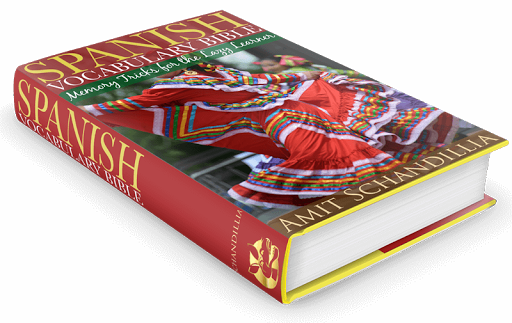 |
| Ojos que te vieron ir... Photo credit: Rob Marquardt licensed CC BY-SA 2.0 |
In order to make the whole exercise more interesting and culturally relevant, these sentences will often be local piropos (pick-up lines), refranes (proverbs), or excerpts of street conversations. This way, the context will not appear bookish as it does in most books that claim to get you from zilch to fluent in Spanish in a few weeks.
Let’s start wth today’s piropo which goes like this (The sense interpreted is given in parentheses and may or may not be the literal translation):
Ojos que te vieron ir, ¿cuándo te verán volver? (Eyes that saw you leave, when will they see you return?)
The nuts and bolts
Let’s break it down, perform the autopsy. For this, it is important that we first see how this sentence literally transliterates and then use some reverse engineering to understand why words are strung together in the fashion they are.
The sentence transliterates as, “Eyes that you (object) saw go, when you (object) will see return?” Hardly makes any logical sense, right? Bear with me for a few minutes and you’ll see just how smoothly words flow right in place. Here we go:
Ojos: This is the Spanish for “eyes”. Ojo is the singular form but since we are talking about both the eyes here, we say ojos. Simple, wasn’t it? Just use visualization to remember this word and you are through. Or, if that doesn’t suit your taste, try flashcards or Anki. It’s not difficult when you break it down.
que: This simply translates to the English word, “that”. Don’t confuse this with qué which means “what” of English questions. So, qué (with that little spike above “e”) is “what” (as in, “What is your name?”) and que is “that” (as in, “The ball that hit me”); qué for questions, que for answers. Hope this didn’t hurt much.
te: This is the Spanish for “you” when used as an object. The English word, “you”, is tú when used as a subject (as in, “You should leave”) and te when used as an object (as in, “I love you” or “She gave it to you”). See the difference? The rules of Spanish dictate that objects like te be immediately followed by the verb affecting them. That’s the reason the most overused Spanish phrase, te quiero (I love you) has te followed by quiero (I love) and not the other way around as is the case with it’s English translation.
vieron: The Spanish for “saw”; The English verb, “to see”, translates to ver in Spanish but because Spanish is a highly inflected language (has a lot of conjugations), ver is rarely used in its basic form (infinitive). So, while the Spanish for “to see” is ver, the actual word used in a sentence will depend on the tense and mood of the context. Here, we are talking about the eyes seeing you leave once in the past (only once and not repeatedly or habitually), so the form of ver used is vieron. If you must dig into the rules of grammar governing this usage, grab your grammar book and read all you want on the preterit tense. Now back to our vieron, this is the word you’ll use whenever the subject is plural (like “two eyes” in our sentence today) and the action is a one-time event in the past (like the eyes that “saw” you leave “only once” as implied in our sentence).
ir: The Spanish for “to go”; this is an example of a verb being used in its most primitive form also known as the “infinitive”.
cuándo: This is how you say “when” in Spanish when asking a question (as in, “When are you going?”). Again, don’t miss the accent mark without which it becomes cuando, meaning when in a non-question sense (as in “I will go when she comes”).
te verán: We already discovered that the Spanish word for “to see” is ver. And we also learned that it is almost always used in one of the many conjugated forms depending on the tense. Verán is simply the form to be used when talking about an event in future performed by more than one subject. Here, we are talking about two eyes so the subject is plural and the verb to be used is ver, hence verán qualifies as the form to be used in this sentence. We already learned that te is the Spanish for you in its object form and that objects come before verb in question, so the Spanish for “will see you” is te verán (the subject being understood to be plural).
volver: This word means “to return” in it’s basic form (one important tip for identifying any Spanish verb in its infinitive form – all such words end in “-ar”, “-er”, or “-ir”).
String’em all together
Now let’s bring them all together. Ojos que te vieron ir means, “Eyes that saw you go,” in the following sentence structure common in Spanish: Subject (plural; here, “eyes”) - connector (here, “that”) - object (singular; here, “you”) - verb1 (here, preterit of “to see”) - verb2 (here, infinitive of “to go”). ¿cuándo te verán volver? means, “When will they see you again?” in the following sentence structure in Spanish: Question word (here, “when?”) - object (singular; here, “you”) - verb1 (here, future of “to see”) - verb2 (here, used in the sense of “again”)
We hope this one sentence has given you enough dose of Spanish for one day and taught new words and new grammar without jagging your brains like those boring books you are dumped with in the classrooms do.












.png)
http://tinyurl.com/spanishflashcardswithpictures - "Spanish Flashcards with Pictures" is an iPhone app that will help you learn Spanish faster by using flashcards with pictures (learn over 300 most commonly used words in the English / Spanish language from A to Z), thanks.
ReplyDeleteI will surely review this app. Is there any Android version available too?
DeleteI will surely review this app. Is there any Android version available too?
ReplyDeleteSorry to be picky, and maybe I'm wrong, but I think there's a mistake in the penultimate paragraph of "Nuts and Bolts" above. The final part of the concluding sentence should read: "the Spanish for 'will see you' is 'TE VERÁN'" ( not 'te vieron').
ReplyDeleteThanks for pointing it out...we stand corrected! :)
ReplyDelete